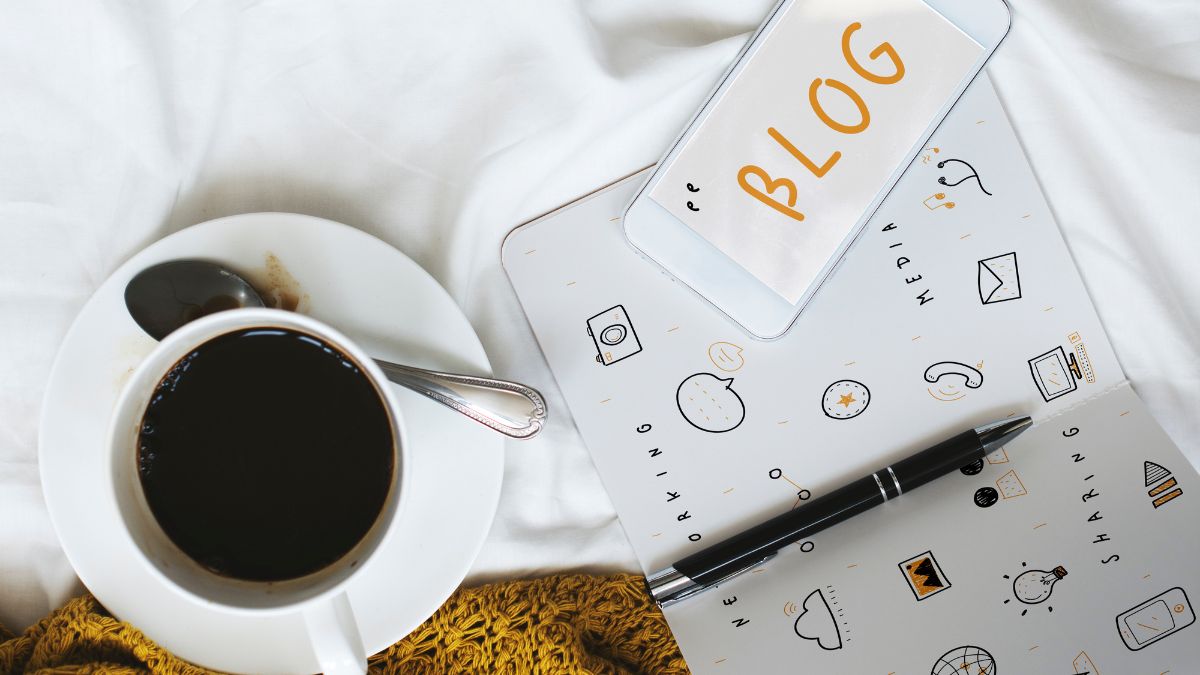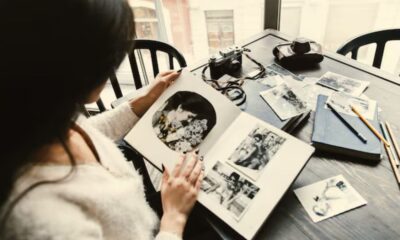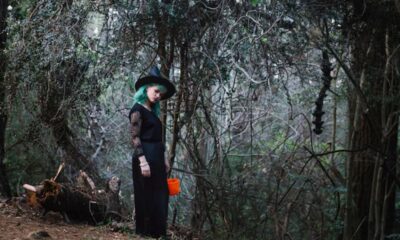Blog
Behind the Scenes with Magdalenavuk15: The Story of a Rising Star in Digital Art

Introduction to Magdalenavuk15 and her Journey in Digital Art
Meet Magdalenavuk15, a name that’s quickly becoming synonymous with innovation in the world of digital art. With each brushstroke and pixel, she captures emotions and stories that resonate deeply with her audience. Her journey is not just about creating stunning visuals; it’s about self-discovery, passion, and the relentless pursuit of creativity.
From humble beginnings to gaining a devoted following on social media platforms, Magdalenavuk15 has transformed her love for art into a thriving career. Join us as we dive into the inspiring narrative of this rising star, exploring her inspirations, creative process, challenges faced along the way, and what lies ahead for this talented artist. Get ready to be inspired by the vibrant world of Magdalenavuk15!
Early Life and Inspiration for Art
Magdalenavuk15’s journey into the world of art began long before she discovered digital mediums. Growing up in a small town, the vibrant colors of nature surrounded her. These hues sparked a deep appreciation for beauty.
As a child, she was constantly doodling and sketching whatever caught her eye. Her notebooks were filled with imaginative creatures and whimsical landscapes. This creativity grew from moments spent exploring local parks and immersing herself in various cultures through books.
Family support played a crucial role as well. Encouragement from loved ones allowed Magdalenavuk15 to pursue her passion without hesitation. She often cites childhood experiences as significant influences on her artistry today.
The seeds planted during those formative years have blossomed into an impressive career that blends nostalgia with modern flair. Each piece reflects not just skill but also the essence of who she is—a true testament to where it all started.
Transition into Digital Art
The transition into digital art for Magdalenavuk15 was a natural evolution. Initially captivated by traditional mediums, she discovered the limitless possibilities that technology offered.
With a tablet in hand and software at her fingertips, she dove headfirst into this new realm. The vibrant colors and dynamic tools fascinated her. Each brushstroke felt alive, transforming how she expressed ideas.
Experimentation became key during this phase. She explored various styles and techniques, pushing boundaries that were once unthinkable on canvas.
This shift wasn’t just about tools; it was also about community. Connecting with fellow artists online opened doors to collaborations and shared inspiration.
Magdalenavuk15 quickly realized that digital art allowed for instant feedback and interaction with her audience. This connection fueled her creativity further, igniting a passion that would only grow stronger over time.
Building a Following on Social Media
Building a following on social media is an art in itself. For magdalenavuk15, it’s all about authenticity. She shares her journey and creative process openly with her audience.
Engagement plays a crucial role. Magdalenavuk15 responds to comments and messages, fostering a sense of community among her followers. This connection makes them feel valued and invested in her work.
Consistency is key too. Posting regularly keeps her content fresh and ensures she stays top-of-mind for fans. Each piece serves as both a showcase of talent and an invitation to join the conversation.
Using hashtags effectively helps reach new audiences as well. By tapping into trending topics within the digital art world, she expands her visibility beyond existing followers.
Collaboration also opens doors for growth. Partnering with other artists or influencers introduces magdalenavuk15’s work to different fan bases, creating opportunities for cross-promotion that benefit everyone involved.
Process of Creating Digital Art
Creating digital art is an immersive experience for magdalenavuk15. Each piece begins with a spark of inspiration, often drawn from her surroundings or personal emotions. She translates these ideas into rough sketches, allowing her imagination to flow freely.
Once the sketch feels right, she dives into color selection and composition. This stage is crucial; it sets the tone for the entire artwork. Magdalenavuk15 believes that colors can evoke powerful feelings, so she chooses them carefully.
Digital tools enhance her creativity. With software like Procreate or Adobe Illustrator, she brings her visions to life layer by layer. The process involves adjusting details until everything aligns perfectly.
Music often accompanies her work sessions, creating an atmosphere that fuels productivity and creativity. As time passes, each stroke becomes part of a larger narrative—a reflection of her journey through art and self-expression.
Challenges and Rewards of being a Digital Artist
Being a digital artist comes with its own set of challenges. One major hurdle is the constant need for self-discipline. Without a structured environment, it’s easy to lose focus and fall behind on projects.
Technical issues can be another source of frustration. Software crashes or hardware malfunctions can disrupt creative flow at the most inconvenient times.
However, there are immense rewards too. The thrill of creating something from scratch is unmatched. Each finished piece serves as a testament to your skills and creativity.
Building connections within the online art community brings joy and validation. Sharing artwork allows artists like magdalenavuk15 to receive feedback that fuels further growth.
The ability to reach global audiences opens doors for collaboration and inspiration beyond borders. Every challenge faced often leads to newfound skills or perspectives in this vibrant field of digital artistry.
Future Goals and Projects
Magdalenavuk15 has her eyes set on exciting horizons. She envisions expanding her portfolio to include immersive experiences that blend art and technology. Think virtual reality exhibits where viewers can step into her creations.
Collaborations also excite her. Partnering with other artists and brands is high on her list. She believes these connections will spark new ideas and push the boundaries of digital art further.
Education plays a vital role in Magdalenavuk15’s future plans. Offering workshops or online tutorials could inspire budding artists to explore their creativity without limitations.
Additionally, she dreams of launching an exclusive collection featuring limited edition prints that capture the essence of her style. Each piece would tell a story, resonating deeply with fans around the world.
The journey ahead is filled with promise for Magdalenavuk15 as she continues to carve out a unique niche within the ever-evolving realm of digital art.
Advice for Aspiring Digital Artists
Aspiring digital artists often seek guidance, and there are a few key pieces of advice to consider. First, embrace experimentation. Don’t be afraid to try different styles and techniques. This exploration will help you discover your unique voice.
Practice is essential. Dedicate time each day to improve your skills. Even short sessions can lead to significant progress over time.
Engage with the community on platforms like Instagram or DeviantArt. Share your work and connect with others in the field; feedback can provide valuable insights.
Invest in quality tools that fit your budget. Whether it’s software or hardware, having reliable resources enhances creativity.
Stay true to yourself. Authenticity resonates more than perfection in art. The journey is as important as the destination—enjoy every moment of it!
Conclusion
As we delve into the world of magdalenavuk15, it’s clear that her journey is an inspiring testament to passion and creativity. She has transformed challenges into stepping stones for growth in the digital art community. Her unique approach to creating mesmerizing pieces has captivated audiences worldwide.
With a vision that embraces innovation, she continues to push boundaries while staying true to her artistic roots. The future looks bright for this rising star as she sets ambitious goals and explores new projects on the horizon. For aspiring digital artists, magdalenavuk15 serves as a beacon of motivation—a reminder that with dedication and originality, one can carve out their own niche in this vibrant field.
Stay tuned for more from magdalenavuk15 as she navigates her exciting path in digital art!
Blog
Selena Green: The Voice Behind the Hits – An In-Depth Profile

Introduction to Selena Green and her music career
Selena Green has become a household name in the music industry, captivating audiences with her powerful voice and heartfelt lyrics. With hits that resonate across genres, she’s not just an artist; she’s a phenomenon. From the moment fans first heard her debut single, it was clear that Selena Green was destined for greatness. But who is this talented musician behind the chart-topping tracks? Join us as we dive into the life and career of Selena Green, exploring her journey from humble beginnings to international stardom. Get ready to uncover the story behind the voice that has left an indelible mark on music today!
Early Life and Musical Influences
Selena Green was born into a family that cherished music. Growing up in a small town, she found herself surrounded by diverse sounds. Her parents played everything from classic rock to soulful jazz. This rich musical environment ignited her passion early on.
As a child, Selena would often sing along with her favorite artists. Icons like Aretha Franklin and Whitney Houston served as major influences during her formative years. Their powerful voices inspired her to develop her own unique style.
Local community events provided the young singer with opportunities to perform. She participated in school talent shows and local festivals, captivating audiences with her raw talent. Each performance fueled her ambition further, solidifying music’s role as an integral part of her life.
Selena’s upbringing laid the foundation for what would become an extraordinary career filled with rhythm and soul.
Rise to Fame with Debut Album
Selena Green’s debut album catapulted her into the spotlight. Released in 2018, it showcased her distinctive voice and songwriting prowess.
Fans were instantly drawn to tracks like “Chasing Shadows” and “Echoes of You.” These songs became anthems for a generation searching for authenticity in music. Critics praised her ability to blend genres, creating a fresh sound that resonated with many.
The album’s success led to sold-out shows across the country. Selena’s performances radiated energy, captivating audiences everywhere she went. Her connection with fans was palpable; they sang along word-for-word at every concert.
Radio stations quickly picked up her hits, solidifying Selena as a rising star. The accolades poured in as award nominations followed suit. It was clear: this was just the beginning of something great for Selena Green.
Personal Life and Challenges Faced
Selena Green’s journey hasn’t been without its obstacles. Growing up in a small town, she faced the challenge of limited resources and opportunities. The music industry can be ruthless, but Selena found her strength through resilience.
Her rise to fame brought unexpected pressures. Balancing public scrutiny with personal life proved daunting at times. She often felt overwhelmed by expectations from fans and critics alike.
Navigating relationships has also posed difficulties for Selena. Maintaining connections while traveling and working tirelessly can strain even the strongest bonds. Despite these challenges, she remains grounded and values her close friends and family above all.
Mental health has been another hurdle for Selena. She bravely opened up about anxiety during interviews, shedding light on an issue many face but few discuss openly within the entertainment world. Through therapy and self-care practices, she continues to prioritize her well-being as a vital part of her journey in music.
Evolution of Sound and Style
Selena Green’s journey through music has been nothing short of transformative. Her sound initially focused on pop melodies, infused with a vibrant energy that resonated with fans worldwide. Tracks from her early albums showcased catchy hooks and relatable lyrics.
As she evolved, so did her musical palette. Selena began experimenting with electronic beats and R&B influences, broadening her artistic horizons. This shift allowed for deeper emotional expression in her songwriting.
Her latest works reveal an intriguing blend of genres—soulful ballads alongside upbeat dance tracks. The evolution reflects not just personal growth but also an understanding of the ever-changing music landscape.
Visually, Selena’s style mirrors this progression. From colorful outfits to sophisticated chic looks, each era complements her sonic shifts beautifully. This transformation captures the essence of who she is as a modern artist navigating today’s industry dynamics seamlessly.
Collaborations and Achievements
Selena Green has always been known for her ability to connect with other artists. Her collaborations reflect a diverse range of styles, showcasing her versatility and depth as a musician. Working alongside established names in the industry has expanded her reach and influence.
Tracks like “Echoes,” featuring the talented R&B singer Jordan Blake, pushed boundaries and received critical acclaim. The synergy between their voices created magic that resonated with fans around the globe.
Her achievements go beyond chart-topping hits. Selena’s music won several prestigious awards, including multiple Grammys. Each accolade is a testament to her hard work and dedication.
Beyond individual success, Selena actively supports emerging artists through collaborative projects. She values community within the industry, often mentoring young musicians looking to find their voice.
Every collaboration enriches not only her discography but also solidifies her status as an influential figure in contemporary music.
Impact on the Music Industry
Selena Green has undeniably made her mark on the music industry. Her unique sound blends various genres, inspiring countless artists to explore new musical territories.
With chart-topping hits that resonate with fans across the globe, she has proven that authenticity speaks volumes. Selena’s lyrical depth tackles themes of love, struggle, and empowerment—elements that many find relatable.
As a trailblazer for emerging female artists, she champions individuality and creative freedom. This commitment fosters an environment where diverse voices can flourish in a predominantly male-dominated space.
Her influence also extends beyond music; Selena actively engages in social issues through her platform. From advocating for mental health awareness to supporting marginalized communities, she uses her success responsibly.
Selena Green’s impact is felt not just in sales but also in cultural conversations surrounding artistry and representation within the industry.
Criticisms and Controversies
Selena Green has faced her share of criticisms throughout her career. Some skeptics argue that her sound is overly commercialized, lacking the raw authenticity that many fans crave. They believe she prioritizes mainstream appeal over artistic integrity.
Controversies have also followed Selena regarding her personal choices and public statements. Social media backlash often arises when she expresses opinions on sensitive issues, leading to heated debates among supporters and detractors alike.
Additionally, rumors about her interpersonal relationships with collaborators have at times overshadowed her musical achievements. These whispers can create a cloud of doubt around an artist’s dedication to their craft.
Despite the noise surrounding these criticisms, Selena remains focused on creating music that resonates with her audience. She often uses feedback as motivation to evolve and grow in both artistry and character.
Future Plans and Projects
Selena Green is not one to rest on her laurels. With a string of successful singles under her belt, she is keen on exploring new horizons in music. Fans can expect an exciting blend of genres in her upcoming projects.
She has hinted at collaborations with both established and emerging artists. These partnerships promise to bring fresh sounds that will surprise even the most dedicated listeners.
Additionally, Selena is diving into songwriting for other talents. She aims to share her unique storytelling ability with a wider audience through diverse voices.
Moreover, there are whispers about a concept album focused on personal experiences and social themes. This would mark another evolution in her artistic journey, showcasing depth and insight into pressing issues.
Selena remains committed to live performances, planning an intimate concert series that allows fans to connect with her music up close and personal.
Conclusion: The Legacy of Selena Green
Selena Green has made an indelible mark on the music landscape. Her journey from humble beginnings to iconic status showcases her immense talent and resilience. Each album offers a glimpse into her evolving artistry, reflecting both her personal growth and changing influences.
Her collaborations have brought forth memorable tracks that resonate with fans across generations. Awards and accolades have recognized not just her commercial success but also the impact of her storytelling through music.
Despite facing challenges, Selena’s commitment to her craft remains unwavering. She continues to inspire aspiring artists with authenticity and passion. As she explores new sounds and ventures, the excitement for what’s next in Selena Green’s career builds steadily within the fanbase.
The legacy of Selena Green is one of empowerment, creativity, and unyielding dedication to music—a true testament to what it means to be an artist in today’s world.
-

 TECHNOLOGY1 year ago
TECHNOLOGY1 year agoTop 5 Tips for Mastering in_a_dndmixin_drag in Your Campaigns
-

 TOPIC12 months ago
TOPIC12 months agoExploring the History and Culture of Rosewellsk
-

 TECHNOLOGY1 year ago
TECHNOLOGY1 year agoYMoviesHD vs Other Streaming Platforms: A Comprehensive Comparison
-

 TOPIC1 year ago
TOPIC1 year agoBehind the Scenes: The Philosophy and Vision of PhmHaven
-

 TOPIC1 year ago
TOPIC1 year agoThe Rise of Tribute Printed Pics: Honoring Life Through Photography
-

 TOPIC12 months ago
TOPIC12 months agoA Beginner’s Journey with Lwedninja: From Novice to Pro
-

 TOPIC12 months ago
TOPIC12 months agoIs Finizona Free? Unpacking the Costs Behind This Popular Platform
-

 TOPIC12 months ago
TOPIC12 months agoDecoding m0therearf: Why This Buzzword Matters in Today’s Culture
